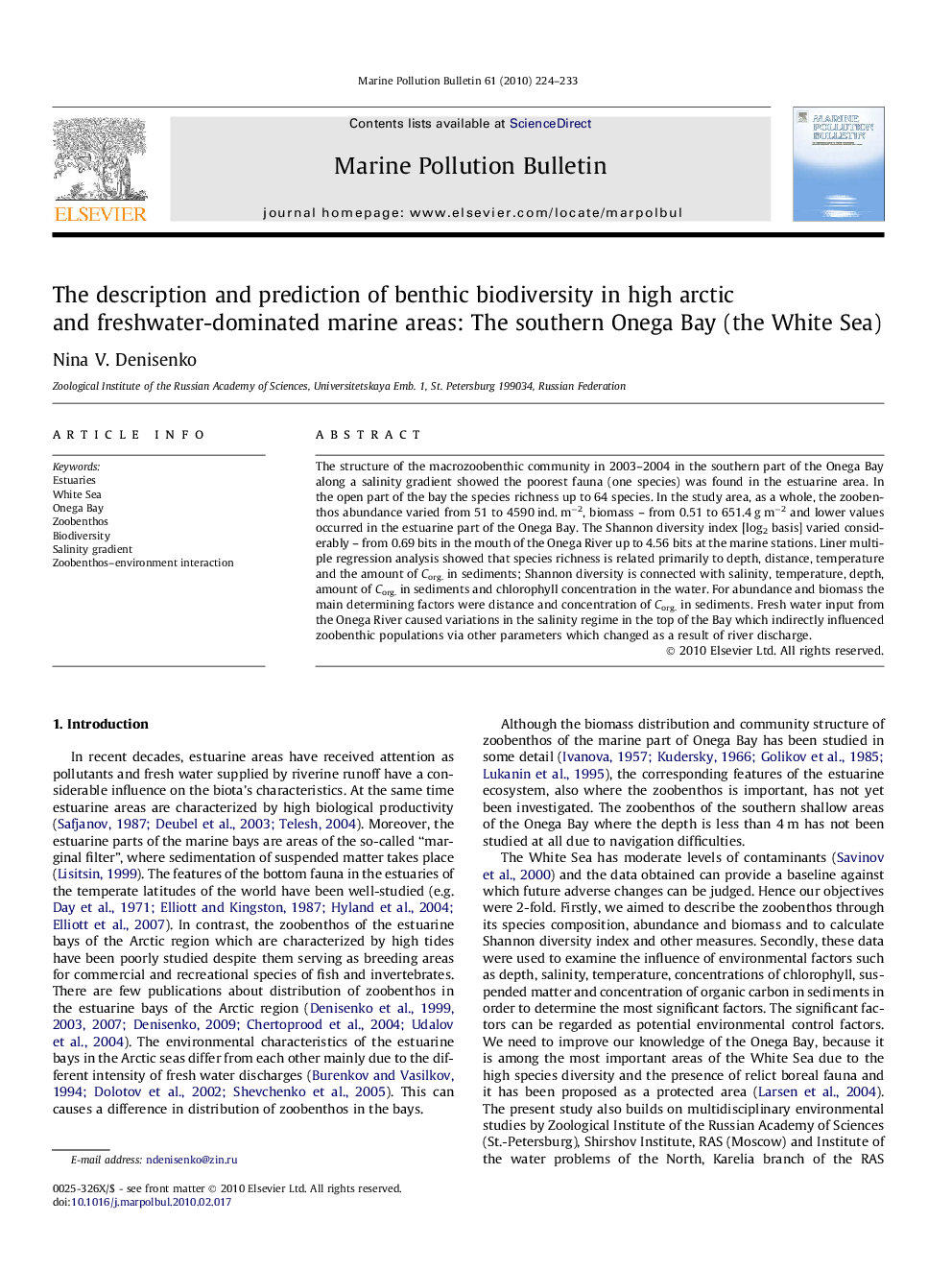| Article ID | Journal | Published Year | Pages | File Type |
|---|---|---|---|---|
| 6362466 | Marine Pollution Bulletin | 2010 | 10 Pages |
Abstract
The structure of the macrozoobenthic community in 2003-2004 in the southern part of the Onega Bay along a salinity gradient showed the poorest fauna (one species) was found in the estuarine area. In the open part of the bay the species richness up to 64 species. In the study area, as a whole, the zoobenthos abundance varied from 51 to 4590 ind. mâ2, biomass - from 0.51 to 651.4 g mâ2 and lower values occurred in the estuarine part of the Onega Bay. The Shannon diversity index [log2 basis] varied considerably - from 0.69 bits in the mouth of the Onega River up to 4.56 bits at the marine stations. Liner multiple regression analysis showed that species richness is related primarily to depth, distance, temperature and the amount of Corg. in sediments; Shannon diversity is connected with salinity, temperature, depth, amount of Corg. in sediments and chlorophyll concentration in the water. For abundance and biomass the main determining factors were distance and concentration of Corg. in sediments. Fresh water input from the Onega River caused variations in the salinity regime in the top of the Bay which indirectly influenced zoobenthic populations via other parameters which changed as a result of river discharge.
Related Topics
Physical Sciences and Engineering
Earth and Planetary Sciences
Oceanography
Authors
Nina V. Denisenko,
